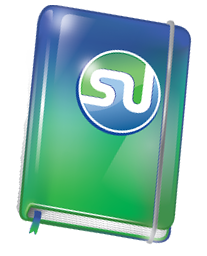
Create a physical activity log
Create your own list of physical education activities and create your own activity log. This is a wonderful mix and match way to teach homeschool PE and it’s really easy to tailor your activities to the ages of your kids. A PE activity list might include 20 minutes of calisthenics (jumping jacks, push-ups, toe touches, etc.), a one-mile walk or run, a 10-minute yoga routine, 10 minutes on the trampoline, or a game of tag with siblings in the backyard.
The activity log is a way for your children to track their physical activity every day. They pick an activity or two from the list above and, once complete, they log the date, time spent, and what they did.
Note: for high schoolers, 60 total hours of activity equals 1/2 credit for PE on a transcript.
Community sports or dance classes
If you have the time and money, and if your child has the desire, sign them up for Little League, softball, or soccer. Dance classes are also a great way to get physical activity into their days. Musical theater is a beloved activity in our house, and I count it as a music and PE credit for my kids!
Your child can add the time spent on these activities to their activity logs for PE credit
Homeschool PE classes in your community
Many homeschool co-ops and even churches with gyms offer homeschool PE programs and classes! Some of these classes are based on the President’s Physical Fitness test, while others may be more specialized, like “team sports”, or archery.
Dojos often have homeschool karate lessons for homeschoolers during the day. Ask other homeschoolers in your area for ideas.
Online resources
You can also use online resources to plan activities and nutritional lessons. There are numerous private and government websites to help you plan a PE curriculum.
National Heart, Lung, and Blood Institute – nhlbi.nih.gov offers tools and resources for families. Fuel Up to Play 60 – offers lessons and directions for children.
You can also find fitness channels for kids on YouTube! Cosmic Kids Yoga and Little Sports are both great options for all ages!
Think outside the box
There really are so many options for physical fitness available: archery, trapeze lessons, even learning to juggle! And homeschooling allows you to schedule these activities during the day, during hours that a business or gym isn’t so busy.
And remember, PE doesn’t have to be organized team sports or traditional fitness tests. Any activity that gets kids moving and that helps them develop hand-eye coordination and manual dexterity can count towards PE credit. Brainstorm with them about activities they may want to pursue and start searching for Youtube videos that teach that skill.
Explore unique opportunities in your own communities such as parkour lessons or free group Tai Chi lessons in the park. Be creative!
***Be sure to join our How To Homeschool For Free Support Group for daily encouragement and more great resources for your homeschooling journey!***














